Eero 6 Mesh Wi-Fi review: affordable mesh networking for the masses
The Eero 6 system is simple, fast and inexpensive
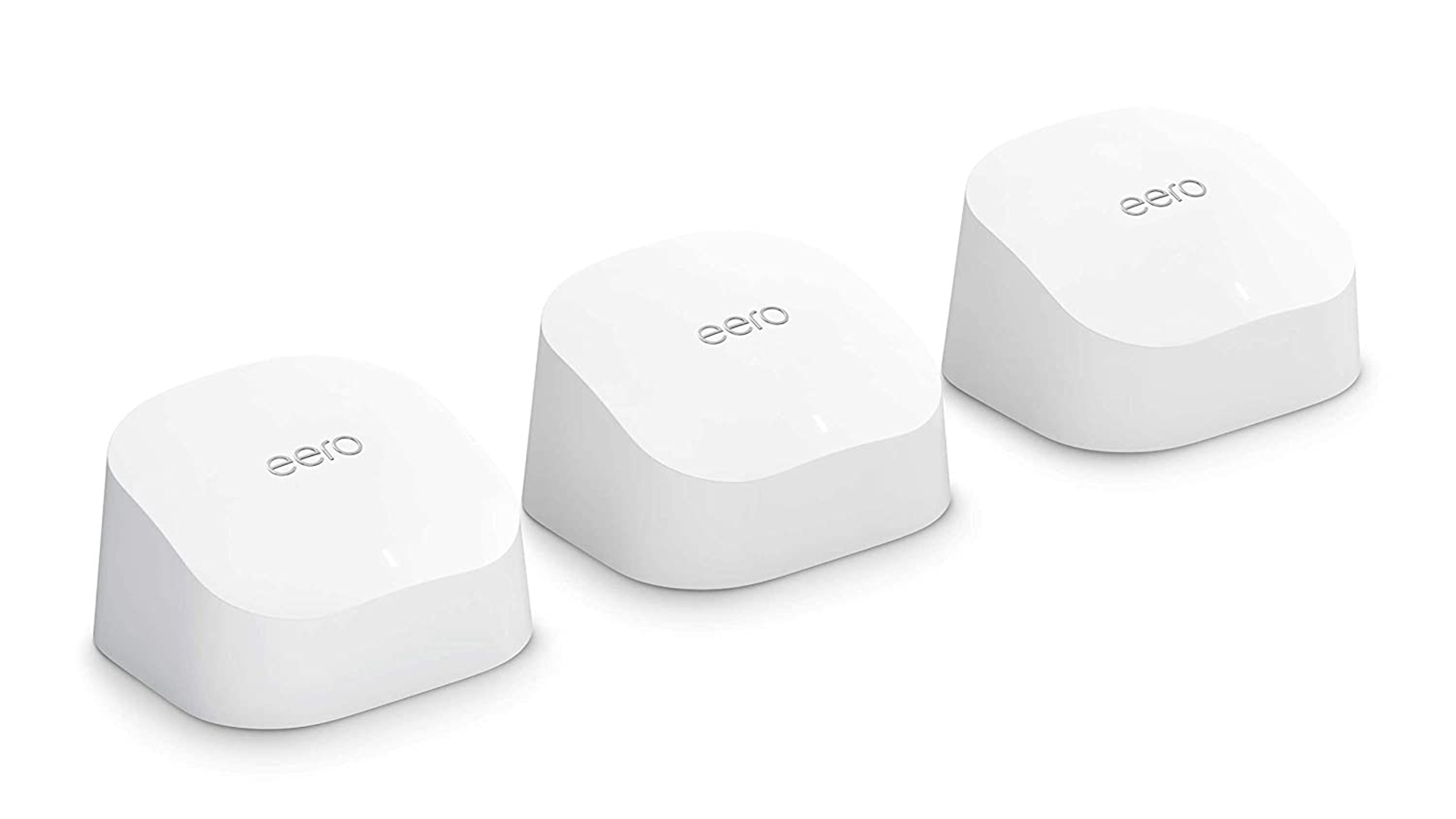
The Eero 6 system isn't the most advanced or the most powerful on the market at the moment, but it's going to be more than enough for the needs of most users – and its value-for-money pricing, its stable performance and its simplicity make it stand out.
-
+
Strong speeds, wide coverage
-
+
Ready for Wi-Fi 6 devices
-
+
Simple to use and configure
-
-
Security extras require a subscription
-
-
No Ethernet ports on extenders
-
-
Lacks advanced customisations
Why you can trust T3

The Eero 6 Mesh Wi-Fi system is instantly a contender for the best mesh network devices around at the moment – the Amazon-owned company has been putting out this kind of kit for years, and the system we're reviewing here is the latest and greatest model.
While you can buy the Eero 6 router and extenders separately, here we're reviewing the bundle that's available – it comes with the main router (to connect to your existing hardware) and two extenders to spread fast and stable Wi-Fi further around your home.
In theory, you should find yourself with no Wi-Fi dead zones after the Eero 6 kit is set up, with stable and speedy wireless internet available everywhere in your home. So does the hardware deliver? Our Eero 6 Mesh Wi-Fi review tells you everything you need to know.
Eero 6 Mesh Wi-Fi review: design and setup
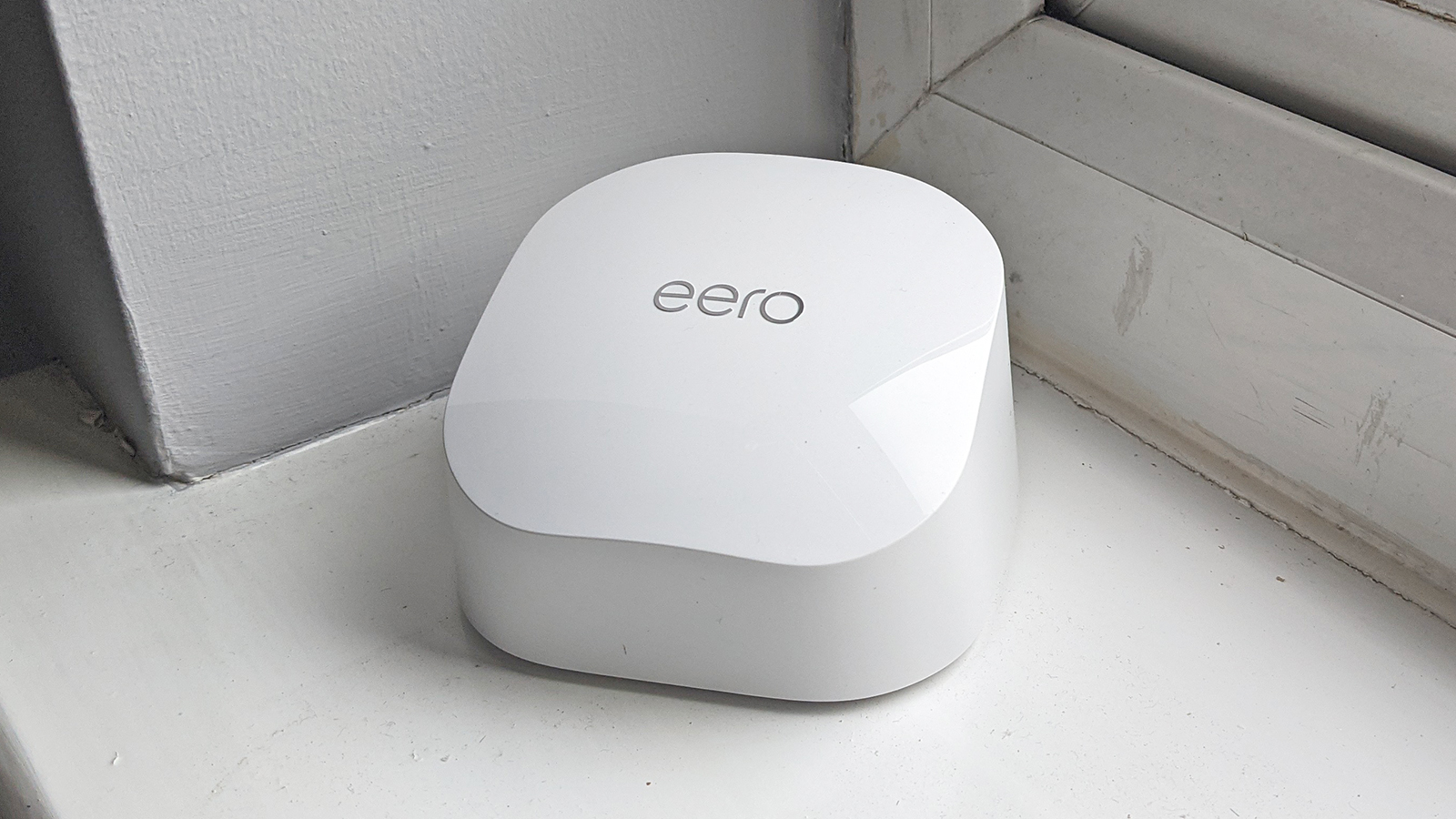
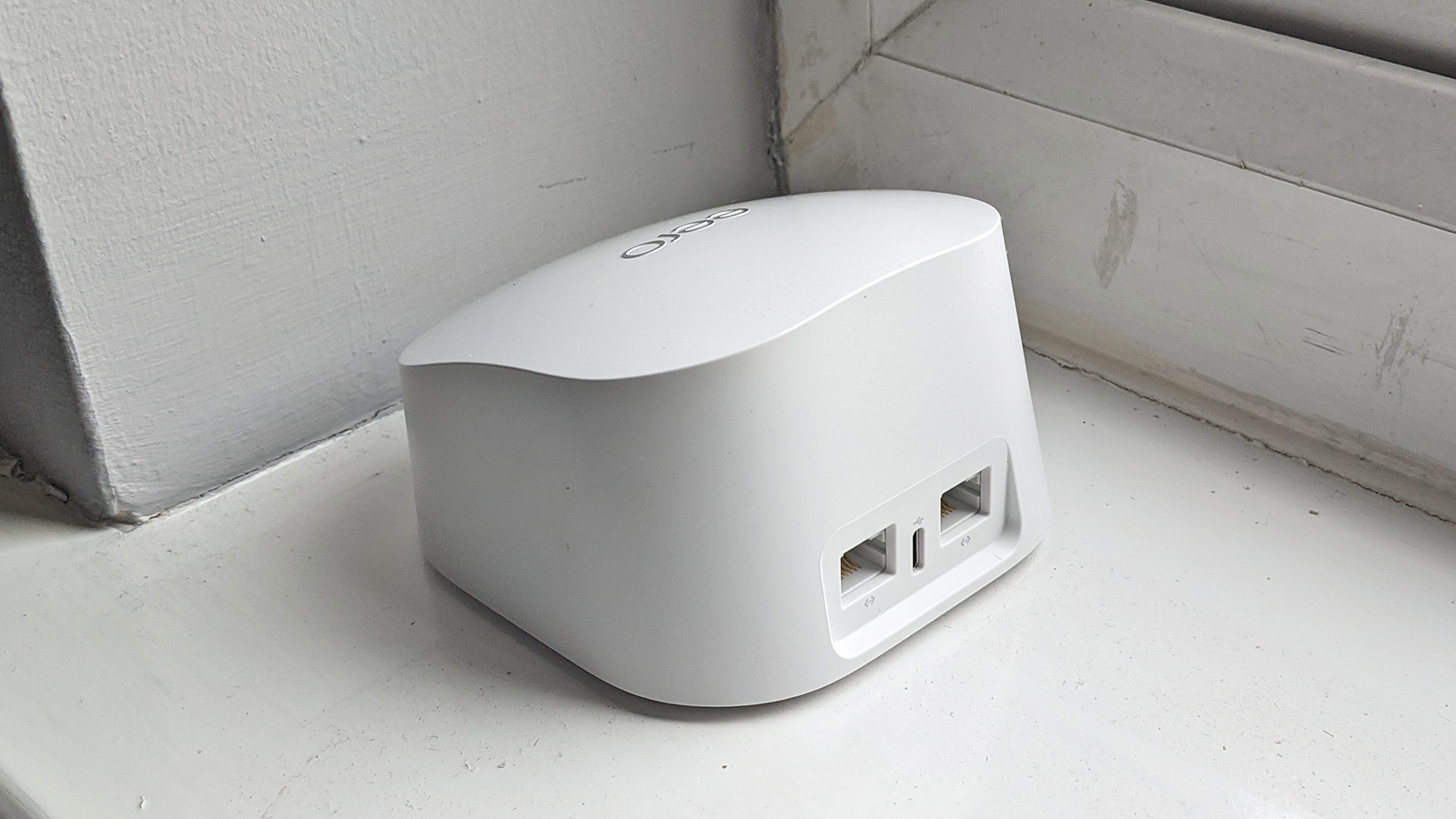
We certainly can't argue with the polished design of the Eero 6 router and extenders, which are very easy on the eye – as far as networking equipment goes, anyway. The main router and the extenders look the same, except the router has a couple of Ethernet ports on the back to connect to your existing modem. There's an Eero logo and a subtle LED light on the front, and the rest is curved white plastic.
At 99.4 mm x 97 mm x 61.4 mm, these little boxes can fit just about anywhere, and they're not going to do too much damage to your overall home decor aesthetic. Each one does need a power cable, but you get these in the package – they're as slimline and as tastefully done as the router and the extenders. We also like the rubber padding underneath the Eero units, which add an extra bit of stability to them.
Setup couldn't be much easier: there's not much more to it than downloading the app to your phone and plugging in the Eero boxes one by one. The mesh networking devices work with whatever modem or router you already have in place, but you can give your new Wi-Fi network the same name and password as your old Wi-Fi network to save you having to reconnect all your old gadgets. You can also choose whether or not to keep your old Wi-Fi network up and running.
The app will tell you when everything is up and running successfully, and will even give you advice about where best to place the extenders that you've got. Buy the bundle we're reviewing here, and you get a month's free trial of Eero Secure, which includes extras such as priority support, ad blocking, advanced threat detection, content filtering and more – see here for details. Eero Secure normally costs from £2.99/$2.99 a month.
- Check out the best smartphones you can buy right now
Eero 6 Mesh Wi-Fi review: features and performance
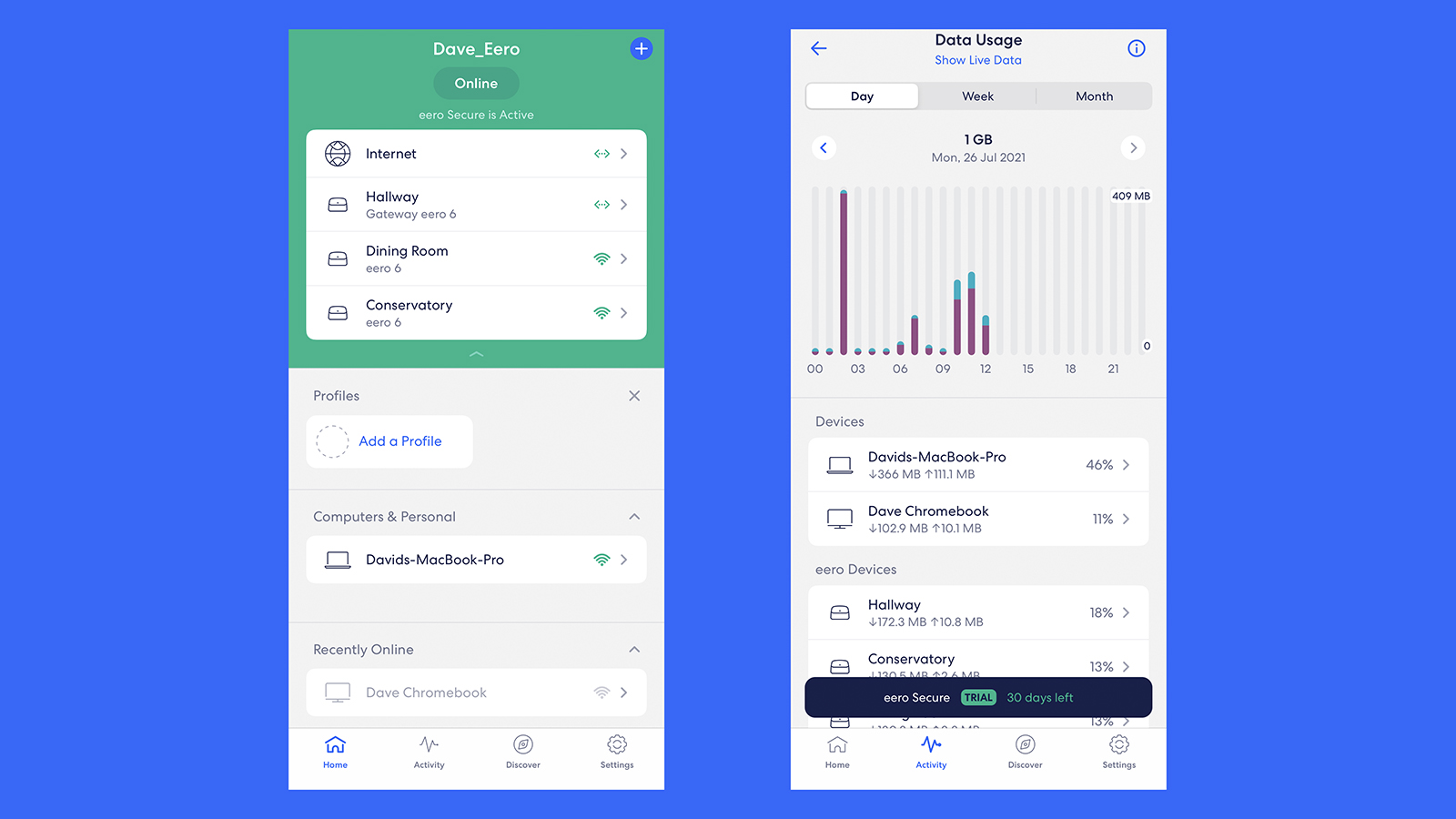
The router and two extenders that we're reviewing here promise coverage for up to 460 square metres of space, so most homes should be well covered – if you live in a stately home, you might have to buy more extenders. More than 75 devices can be supported on an Eero 6 network, and Wi-Fi 6 support is included for the fastest possible wireless speeds, as long as your other devices are Wi-Fi 6 ready as well (most new gadgets now are, but older Wi-Fi standards are supported too).
Buying a mesh networking kit like the Eero 6 won't actually improve the speed of the internet coming into your home, of course – that's between you and your Internet Service Provider (ISP) – but it should ensure a faster, more stable connection further away from your main router. Eero says speeds of up to 500 Mbps are supported, and while you're unlikely to get close to that unless you live on top of a broadband exchange, we were impressed with the speed and reliability of the connections we got.
While the home we tested the Eero 6 in is already pretty well covered by a mesh network (and not all that big to begin with), the addition of a third box really made a difference in boosting signal strength from 'weak' and 'medium' to 'strong' in the extremities of the building. Download speeds were slightly up on what we typically get from our existing setup too, so as far as we were able to test the Eero 6, it came through with flying colours.
The app is a pleasure to use as well: you can very easily see which devices are connected, check up on data usage, create a guest account and more. Parental controls are included, but only insofar as you can limit what times certain devices can get online – to use the more advanced content filtering tools, you need an Eero Secure subscription. It's a slick, well-presented bit of software, and it's perfect if you want easy and convenient network management from your phone.
- All the best tablets together in one list
Eero 6 Mesh Wi-Fi: price and verdict
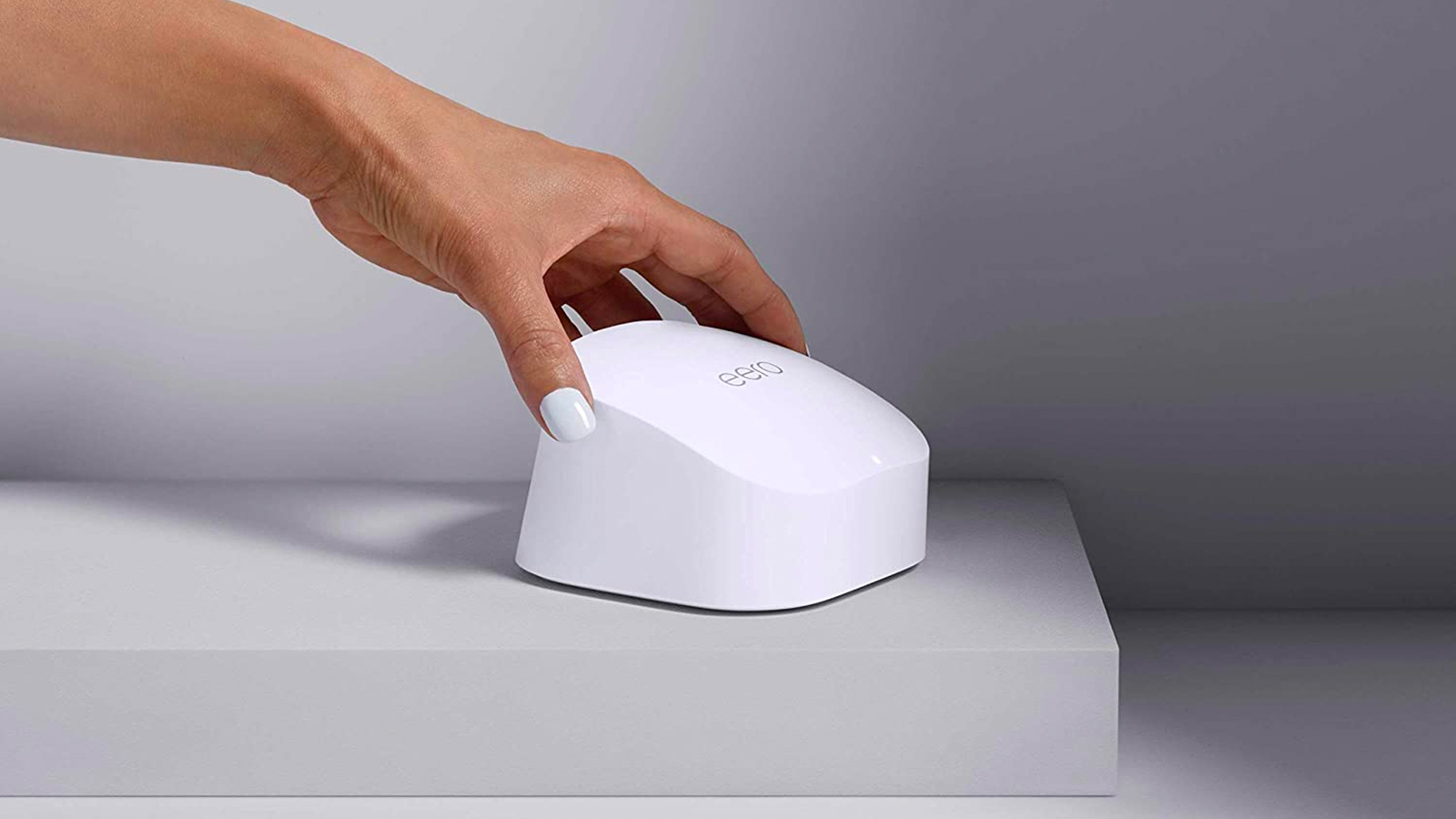
Just about everything the Eero 6 Mesh Wi-Fi system did impressed us: from the simplicity of the setup to the range of the network it created. The dual-band technology here does a great job of keeping dozens of devices connected and served with high-speed Wi-Fi (assuming your broadband plan can cope), and even for those less confident with networking technology, the app is straightforward and intuitive to use.
We should also mention that the Eero 6 doubles up as a smart home hub, so if you have Zigbee-compatible smart devices then you won't need a separate hub for them with the Eero 6 installed. As you would expect, considering Amazon owns Eero, this kit works well with Echo devices too – "Alexa, turn off the Wi-Fi" is one of several voice commands you can issue to your smart speaker. The Apple HomeKit standard is supported as well.
Advanced users will want a bit more from their mesh networking – such as the ability to separately configure the 2.4GHz and 5GHz channels, something that the Eero 6 doesn't let you do (it manages connections automatically instead). You can't prioritise certain devices (such as games consoles) either, which is a feature that those with more technical know-how usually look out for. The Eero 6 sticks to the basics and covers them well, at a price that's appealing.
Coming in at £279/$279 for this particular three-pack, we'd say the Eero 6 Mesh Wi-Fi system is very well priced, at least in this configuration. There is a tri-band Pro option, with more coverage and higher maximum speeds, but of course that'll cost you more – in terms of its simplicity, its performance and its pricing, we'd say the Eero 6 pack is one of the best mesh networking systems you can get right now.
- Check out the best laptops you can buy today
Sign up to the T3 newsletter for smarter living straight to your inbox
Get all the latest news, reviews, deals and buying guides on gorgeous tech, home and active products from the T3 experts
Dave has over 20 years' experience in the tech journalism industry, covering hardware and software across mobile, computing, smart home, home entertainment, wearables, gaming and the web – you can find his writing online, in print, and even in the occasional scientific paper, across major tech titles like T3, TechRadar, Gizmodo and Wired. Outside of work, he enjoys long walks in the countryside, skiing down mountains, watching football matches (as long as his team is winning) and keeping up with the latest movies.
-
 Apple Watch is set to get Apple Intelligence this year, but only with a little help from a friend
Apple Watch is set to get Apple Intelligence this year, but only with a little help from a friendBring on watchOS 12
By Britta O'Boyle Published
-
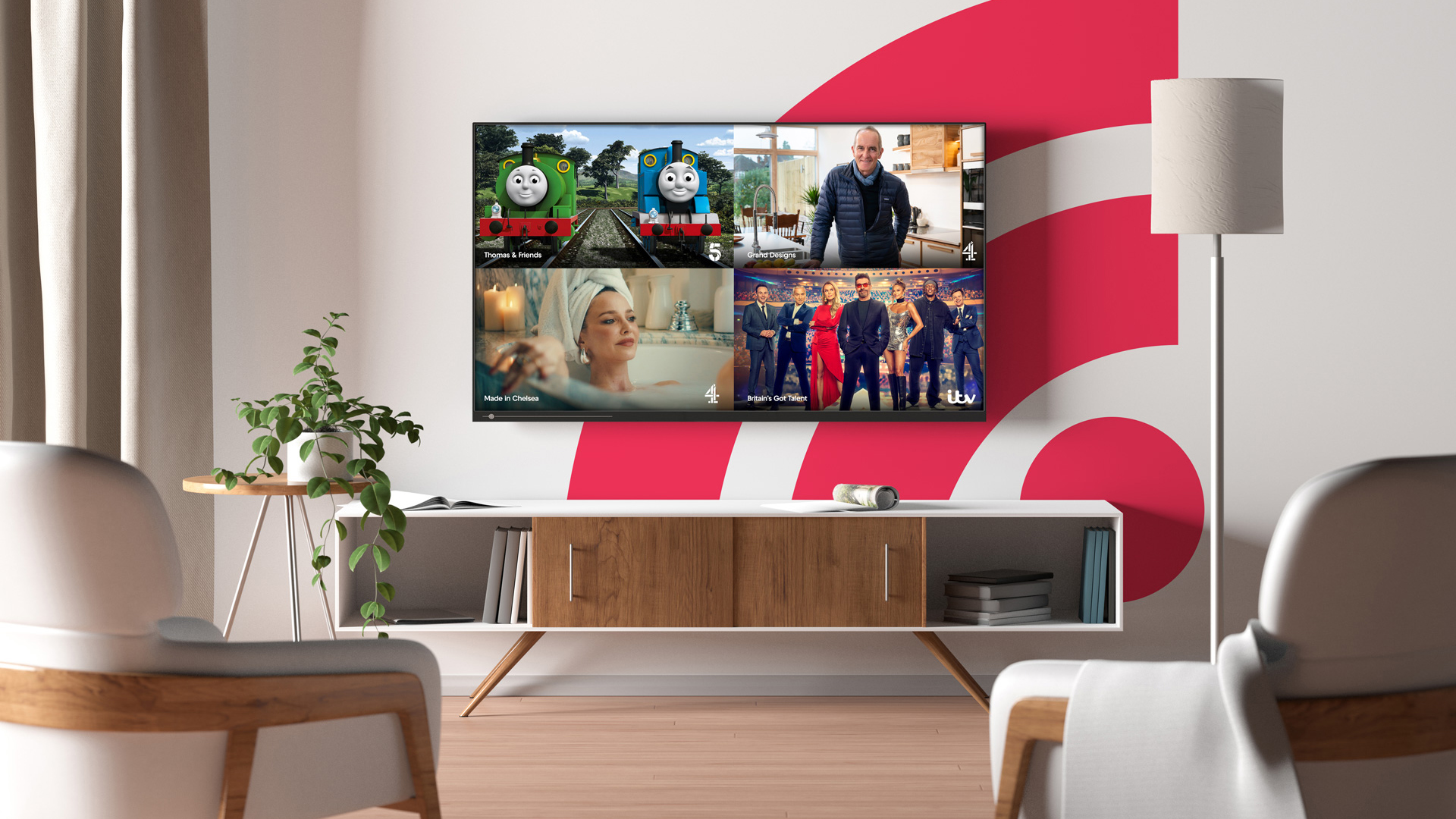 Your Smart TV might be getting 16 new channels for free – here's how to check
Your Smart TV might be getting 16 new channels for free – here's how to checkTVs with Freely will be able to stream a host of new channels "in the coming month"
By Rik Henderson Published
-
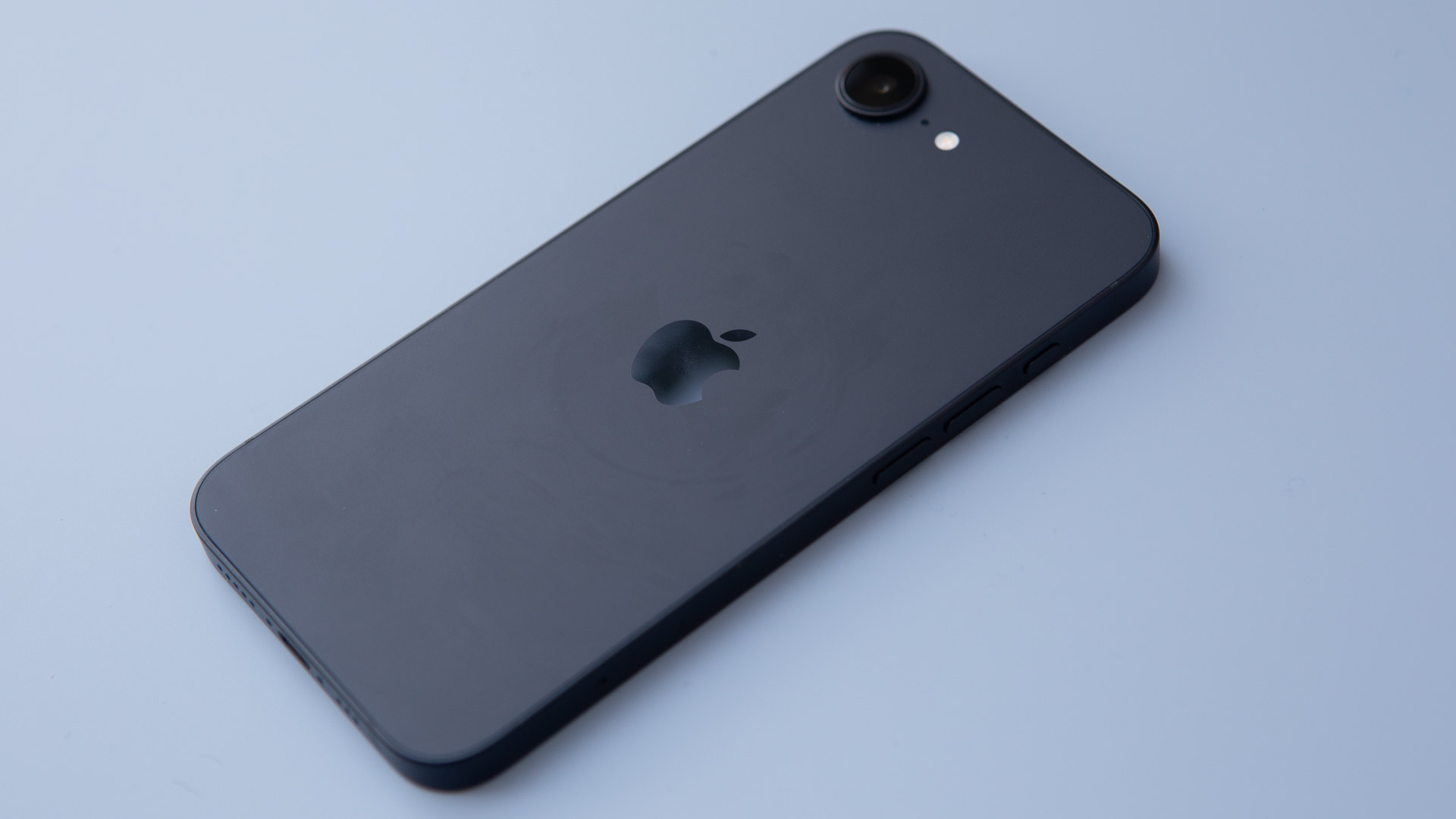 Apple's iPhone just did something it never has before
Apple's iPhone just did something it never has beforeThis is an unprecedented event for the iPhone
By Sam Cross Published